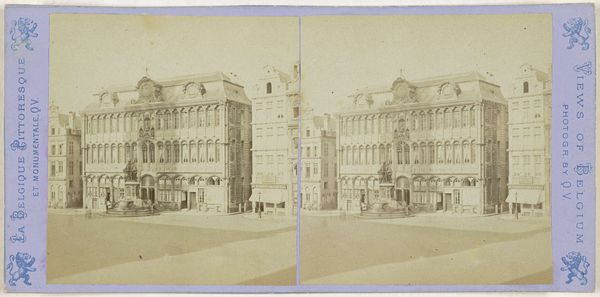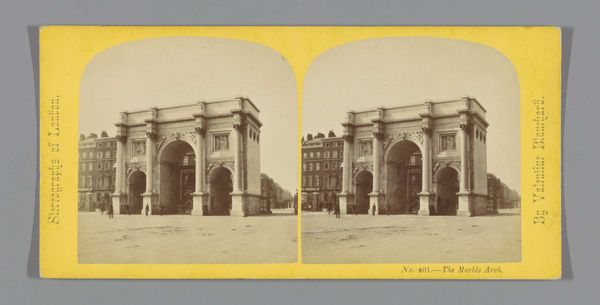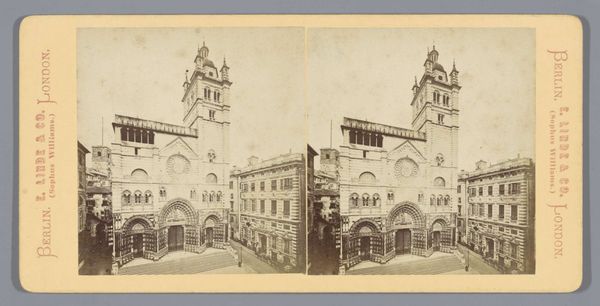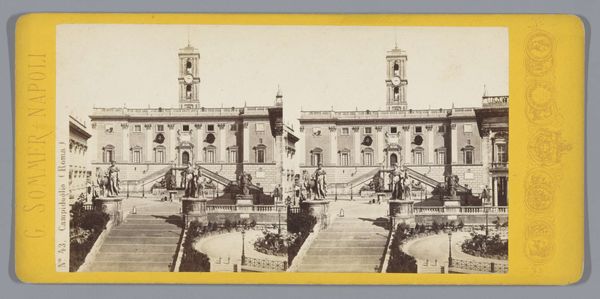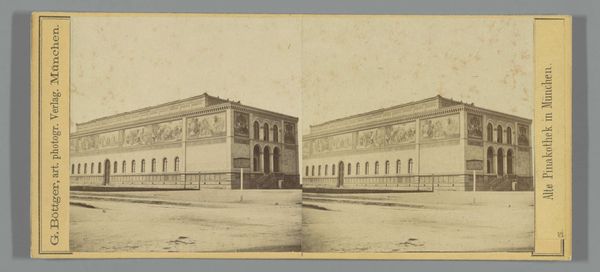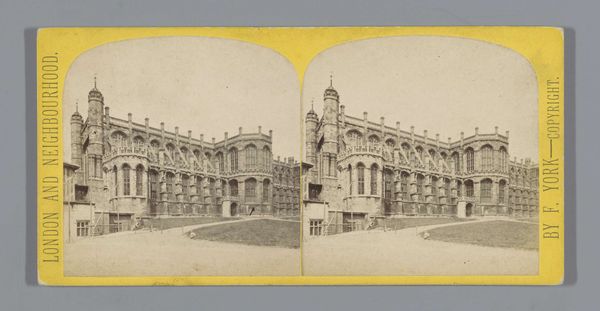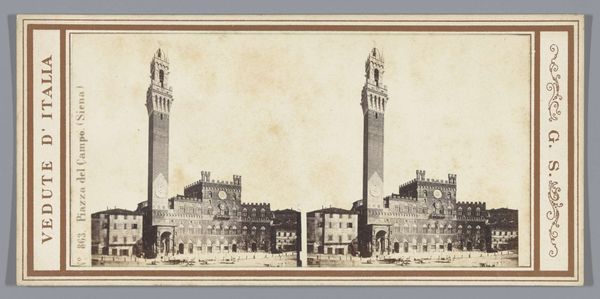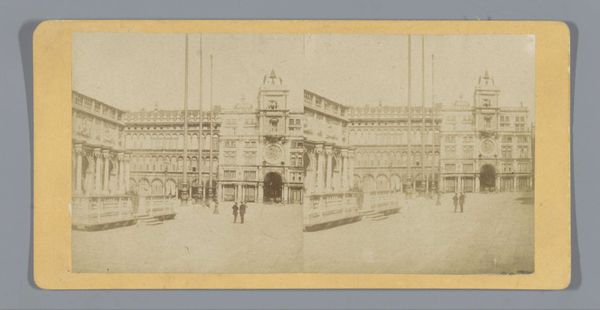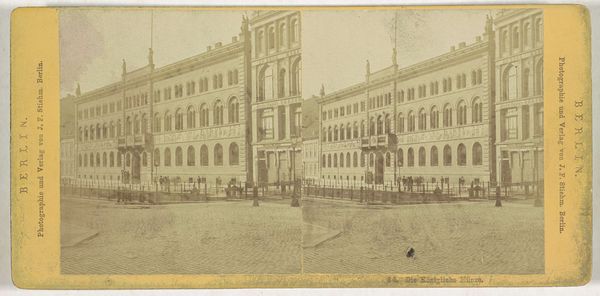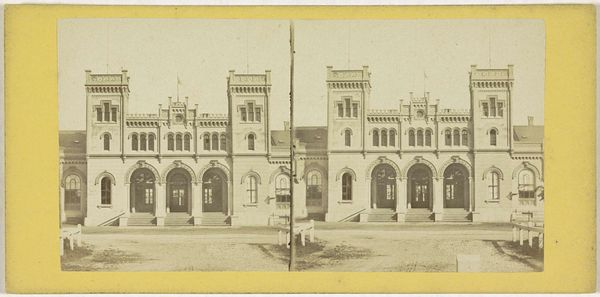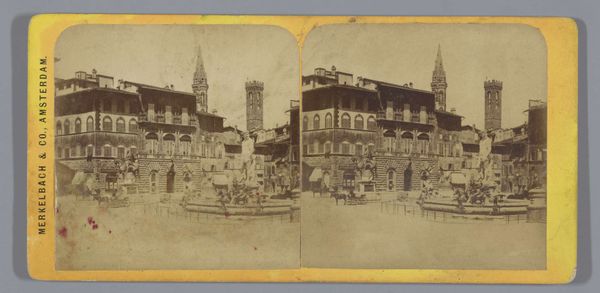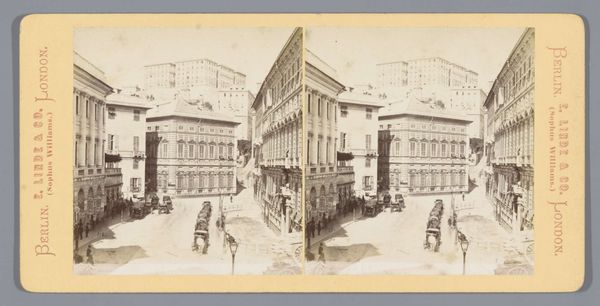
print, photography
# print
#
photography
#
photojournalism
#
cityscape
#
realism
Dimensions: height 88 mm, width 177 mm
Copyright: Rijks Museum: Open Domain
Curator: This image before us is entitled "Oude raadhuis of Staroměstská radnice, Praag," which translates to "Old Town Hall, Prague." It's attributed to František Fridrich and was taken between 1855 and 1868. What strikes you initially about it? Editor: Oh, the melancholic air, definitely! The muted tones… like a memory faded with time, or perhaps the calm before a historical storm. It looks massive, almost imposing. I get a strong sense of history looming. Curator: Indeed. This photograph aligns with a period of burgeoning photojournalism where urban spaces became vital subjects reflecting social and political climates. Considering Prague's complicated history and the timing of this photograph, taken when nationalist sentiments were brewing within the Austro-Hungarian empire, what significance might this civic building have held? Editor: I think I get it; it is a statement, right? Standing tall despite all the turmoil around it. Maybe Friedrich wanted to capture some solidity to look up to. I would've wanted to hang a poster of it above my bed in college! It’s weirdly comforting and majestic. Curator: Precisely! By documenting such prominent landmarks, photographers like Fridrich played a role in shaping national identity. These images circulated widely and likely served as visual reminders of local heritage. We should also observe that this is a stereoscopic image, originally designed to create a three-dimensional viewing experience, suggesting the desire to capture Prague's essence vividly. Editor: That changes everything. You'd almost feel like you're there, a time traveler dropped into that square, soaking up the sepia-toned reality. Like… peering into a real-life diorama. Imagine being present as the shot gets taken; it must have been so impressive for the crowds! Curator: Absolutely. And what’s really fascinating here is that despite being an image of an existing place, photography like this isn't just a neutral document. It presents a selected viewpoint laden with ideology. The choice to emphasize the grandeur and permanence can imply certain values about power and authority. Editor: Okay, it makes me think about all the stories trapped inside its walls, about ordinary lives playing out against the backdrop of monumental events. So even if I wanted to hang it in my bedroom, this thing is complex, politically speaking. Curator: It shows how even seemingly objective media, such as photography, engages with broader cultural conversations about heritage, power, and social memory. It’s really rich, isn’t it? Editor: Immensely. Thanks for the perspective; I see so much more in it now!
Comments
No comments
Be the first to comment and join the conversation on the ultimate creative platform.
